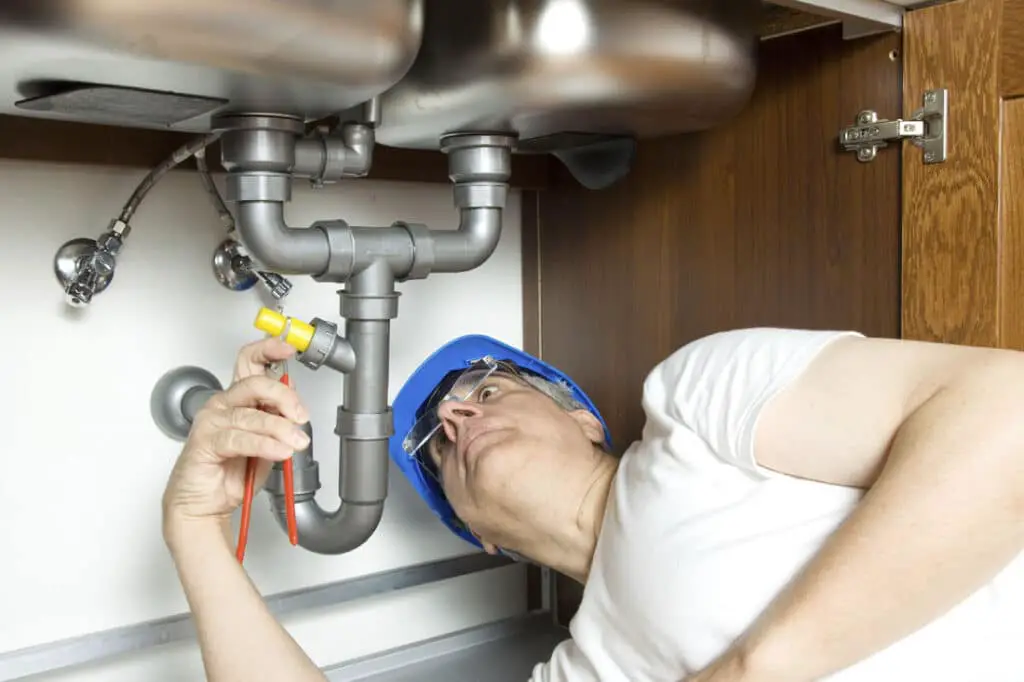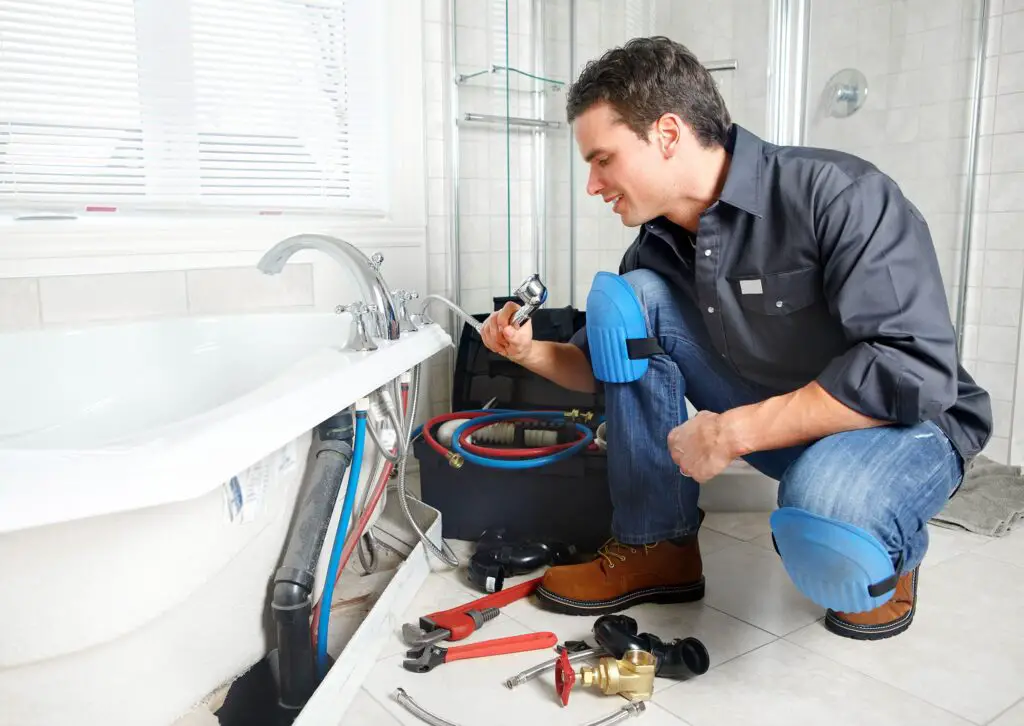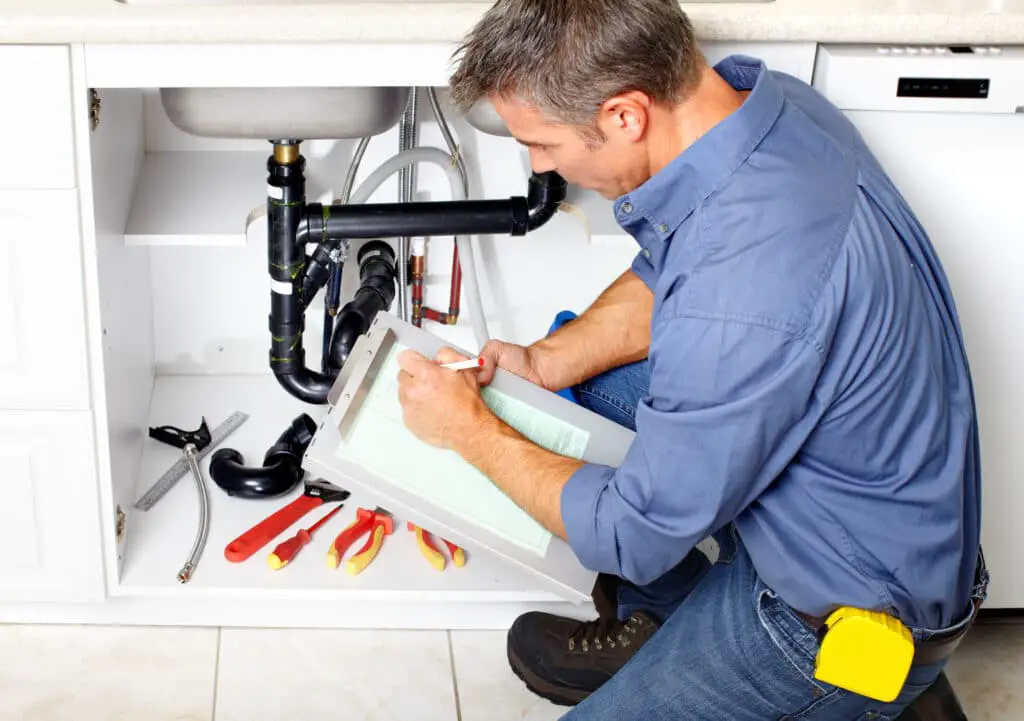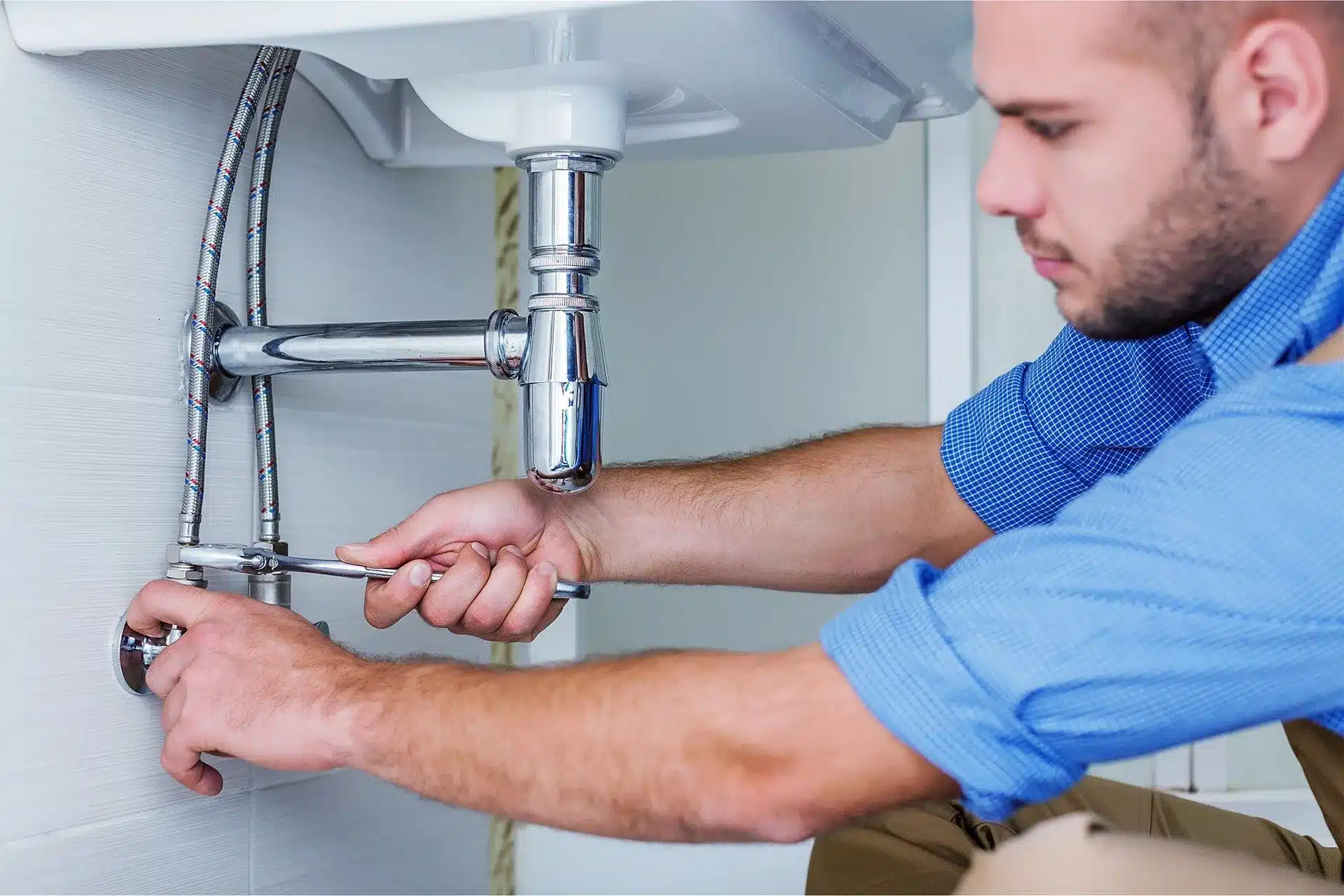When Was Plumbing Invented
Introduction
When was plumbing invented: Plumbing is the system of pipes, valves, and fittings that brings water into buildings and takes away waste. It has been an important part of society for thousands of years. The invention plumbing changed how people managed their water supplies, made hygiene better, and made it easier for cities to grow and become more complicated.
Plumbing can be traced back to the time of the first societies. The Egyptians may have been the first people to build a water system around 2500 BCE. People knew the Egyptians were very good at engineering, and they built very complicated irrigation and drainage systems to keep water moving through their farms.
The Romans also made important advances to plumbing. Aqueducts, which were elevated channels that brought water from faraway sources to their towns, were built by them. The aqueducts were made of stone and had bridges and slopes that showed off some very advanced engineering. The Romans also set up complicated networks of lead lines to bring water to baths, fountains, and private homes.
But plumbing as we know it today didn’t start to take shape until the 19th century. The Tremont Hotel in Boston was the first building in the United States to have plumbing inside in 1829. In cities, this was the start of a big change toward more modern water systems.

Who Invented The Modern Plumbing System?
“Modern” Plumbing ~ 1850 CE
In 1775, Alexander Cummings got a patent for the first toilet that flushed. But until Thomas Crapper came along in the middle of the 1850s, most people didn’t use toilets. Around this time, public toilets opened in London’s Crystal Palace, which led to more people using them.
The plumbing system we use today is the result of many improvements and efforts made by many inventors and engineers over the course of history. Although it’s hard to say who invented plumbing for sure, a number of important people played key parts in building the foundations of the modern system.
Alexander Cummings, a Scottish watchmaker and engineer, was one of the most important people in the history of modern plumbing. Cummings built the S-trap in 1775. It was a U-shaped pipe that sealed off water and kept bad smells from getting into buildings. This idea was a big step forward in sanitation and set the stage for modern plumbing systems.
Thomas Crapper, an English plumber and businessman, was another important figure in the history of plumbing. Crapper made important improvements to toilet design and made the flush toilet popular in the late 1800s and early 1900s, but he is often wrongly given credit for inventing it. He also came up with new plumbing ideas, like the ballcock device, which controls how much water goes into a toilet tank.
Also, an English engineer named Joseph Bramah did a lot to help make the current plumbing system possible. Bramah got a patent for the hydraulic press in 1778. This made it possible for plumbing systems to get water pressure. This big step forward made it possible for water to be efficiently sent through pipes, which made it easier to water many buildings and objects at once.
What Is Plumbing And Its Origin?
Plumbing was first used by old civilizations when they built public baths and needed to make sure that more people could get clean water and have their waste disposed of.
Plumbing is the system of pipes, fittings, and fixtures that bring water into buildings and take trash away. It is very important for keeping people healthy and clean because it removes and treats wastewater and provides clean water for drinking, cooking, and cleaning.
Plumbing goes back to ancient civilizations, when it became clear that people needed a reliable water source and good ways to get rid of waste. Egypt, around 2500 BCE, has one of the oldest examples of plumbing that we know of. To control the flow of water in their farms, the Egyptians built complicated systems for irrigation and draining. In addition, they came up with complex ways to direct water to public pools, fountains, and private homes.
The ancient Romans also made big steps forward in plumbing. They built beautiful aqueducts, which were elevated channels that brought water from far away to their towns. Stone was used to build the aqueducts, which used complex engineering methods like arches and slopes to keep the water flowing. The Romans also used lead lines and complex sewer systems to get water to all parts of their cities and get rid of waste water.
Europe lost plumbing knowledge and skills during the Middle Ages, but plumbing systems were still in place in other parts of the world, like during the Islamic Golden Age. In the Islamic world, especially in cities like Baghdad and Damascus, advanced methods for getting water and getting rid of waste were created. People came up with new ideas, like using buried clay pipes and building public bathhouses.
What Are The Three Types Of Plumbing?
There are three main types of plumbing systems found in homes and businesses: drinkable, sanitary, and stormwater. Each one does something different that is needed to keep the water moving smoothly. To better understand how each type of water system works, read on.
Most buildings have three main types of plumbing: plumbing for water supply, plumbing for drainage, and plumbing for air. Each of these types does a certain job and is necessary for the plumbing system to work properly as a whole.
Water Supply Plumbing
The job of this type of plumbing is to bring clean, drinkable water into a house. The job of water supply plumbing is to get water from the main water source, like a well or a city water supply, to all the fixtures and machines in a building. It has pipes, valves, and fittings that make sure the building’s water supply is pressurized and spread out fairly. Plumbing systems that bring water to homes and businesses also have shut-off valves and pressure regulators that control the flow and strength of the water.
Drainage Plumbing
The job of drainage plumbing is to get rid of garbage and other liquid waste from a building. It is made up of pipes, traps, and fittings that connect sinks, toilets, showers, and other devices to the main sewer line or a septic tank and collect and move wastewater. Drainage plumbing systems are made to make sure that waste moves through them efficiently, stop sewage from flowing backwards, and keep the right amount of air flow to keep smells and dangerous gases to a minimum.
Venting Plumbing
Venting plumbing is what keeps the right amount of air flow and pressure in the pipes. Part of the process is putting in vents and vent lines that let sewer fumes like methane and hydrogen sulfide escape into the air. Your plumbing should have vents so that water doesn’t leak out of traps and the pressure in the system is even. This makes draining easy. Some devices may drain slowly, make gurgling sounds, or smell bad if they don’t have enough venting.
Besides these three main types, there are other kinds of water systems. Gas plumbing is used to move natural gas or propane, and fire prevention plumbing is used in businesses that have sprinkler systems. In any building, though, the water supply, draining, and venting systems are the most important plumbing parts.
What Is Called Plumbing?
Plumbing is the name for the pipes and tools in a building that bring clean water to people who need it and take away waste water. It is not the same as a city or building’s water and sewage system.
Plumbing uses lines, fixtures, and fittings to bring water and waste to places and take them away. It includes the buildings and systems that get clean water to people who need it for cooking, drinking, and cleaning, as well as the right way to get rid of wastewater.
The word “plumbing” comes from the Latin word “plumbum,” which means “lead.” In the past, lead was used to make pipes and fittings, which is where the word “plumbing” comes from. But these days, plumbing systems can be made of copper, PVC, PEX, or galvanized steel, based on the purpose and wants.
People depend on plumbing for clean water and good health. It brings clean water to homes, businesses, and public places so people can cook, clean, and take care of themselves.
Who Is The Oldest Plumber?
A celebration took place Sunday at Saskatchewan Polytechnic in Saskatoon for former alumni Lorne Figley. According to the Guinness Book of World Records, Figley, 92, is the world’s oldest plumber.
The lack of complete records and the fact that plumbing work has been done in many different places throughout history make it hard to figure out who the oldest plumber is. But there are a few well-known people who have made important contributions to the plumbing business and are seen as leaders in their own time.
Thomas Crapper, an English plumber and businessman who lived from 1836 to 1910, is one of these people. Crapper was very important in making the flush toilet popular in the late 1800s and early 1900s, even though he is often given the wrong credit for invention. Thomas Crapper & Co. Ltd. was his own plumbing business that specialized in sanitary fittings and bathroom equipment. Crapper’s new ideas and marketing efforts helped spread the idea of modern indoor water and better ways to keep things clean.
George Washington is another well-known figure in the plumbing business. He is known for surveying and designing systems for water supply and drainage. Before he became the first President of the United States, Washington worked as a land engineer. The Virginia House of Burgesses put him in charge of planning and building the town of Alexandria. Washington paid close attention to every detail and was very good at building, which helped the early American colonies build plumbing systems.

Who Is Credited With Inventing Plumbing?
Plumbing, which is a complete system for getting water and getting rid of trash, wasn’t created by a single person. Instead, it was the result of the ideas and work of many civilizations over time. Plumbing has been around in some way for a very long time. It has changed over time as different cultures have made progress.
Ancient Egypt was one of the first known societies to build water systems. Around 2500 BCE, the Egyptians built complex methods for watering and draining their fields so that they could control the flow of water. They also built dikes, canals, and reservoirs to control water flow and stop floods. These early plumbing methods showed that people knew a lot about hydraulics and how to control water.
In addition to building buildings, the Romans also made important improvements to plumbing. They built beautiful aqueducts to bring water from far away to their towns. Water was sent to public baths, fountains, and private homes through the aqueducts, which were made of stone and used advanced engineering methods like arches and slopes. To deal with waste water, the Romans built complicated networks of lead lines and sewers.
What Materials Were Initially Used In Plumbing Systems?
In the early days of plumbing, various materials were used to construct plumbing systems, each with their own advantages and limitations. These materials were chosen based on their availability, durability, and ease of use. Here are some of the initial materials used in plumbing systems:
Clay
Clay pipes were one of the earliest materials used for plumbing systems. They were made by shaping and firing clay into pipes that were then joined together with mortar. Clay pipes were durable and resistant to corrosion, making them suitable for underground drainage systems. However, they were prone to cracking and breakage, limiting their use in water supply systems.
Lead
Lead pipes were commonly used in ancient Rome and during the Middle Ages. It Lead was a soft and malleable metal that could be easily shaped into pipes. It was durable, resistant to corrosion, and relatively easy to work with. However, the use of lead pipes posed health risks due to the potential for lead poisoning, especially when used in water supply systems.
Wood
In some regions, wooden pipes were used for water supply systems. Trees such as bamboo or hollowed-out logs were used to create pipes. While wood was readily available and easy to shape, it had limitations in terms of durability and susceptibility to rot and leakage.
Stone
In ancient civilizations like Egypt and Mesopotamia, stone pipes were used for water supply and drainage systems. Stone pipes, often made of granite or limestone, were durable and resistant to corrosion. However, the process of shaping and connecting stone pipes required skilled craftsmanship and was time-consuming.
Metal alloys
Over time, metal alloys such as bronze and brass became popular choices for plumbing systems. These materials offered increased strength, durability, and resistance to corrosion compared to clay, lead, and wood. Bronze and brass pipes and fittings were commonly used in ancient Rome and continued to be used in plumbing systems throughout history.
How Did Plumbing Systems Develop In Ancient Civilizations?
Plumbing systems in ancient civilizations underwent significant development, driven by the growing need for reliable water supply, efficient waste management, and advancements in engineering. Here is an overview of how plumbing systems evolved in some ancient civilizations:
Ancient Mesopotamia
One of the earliest known civilizations, Mesopotamia (modern-day Iraq), developed advanced plumbing systems around 4000 BCE. Clay pipes were used for drainage, and cisterns were constructed to collect rainwater. These systems were essential for managing water resources in arid regions.
Ancient Egypt
Ancient Egyptians, around 2500 BCE, constructed complex irrigation and drainage systems. Canals, reservoirs, and dikes were built to control the flow of water for agriculture. Additionally, they developed methods for supplying water to public baths, fountains, and private residences, using materials such as clay and stone pipes.
Ancient Indus Valley Civilization
The Indus Valley Civilization, which flourished around 2600 to 1900 BCE in present-day Pakistan and northwest India, had sophisticated plumbing systems. Houses were equipped with indoor bathrooms and private wells connected to drainage systems made of terracotta pipes. They also developed separate sewer systems for waste disposal.
Ancient Rome
Ancient Romans are renowned for their advanced plumbing systems. They constructed aqueducts, such as the famous Aqua Appia and Aqua Claudia, to transport water from distant sources to cities. Lead pipes and stone conduits were used to distribute water to public baths, fountains, and wealthy households. Roman plumbing systems also included sewer networks that drained waste away from populated areas.
Ancient China
Ancient China developed intricate plumbing systems during the Qin and Han Dynasties (221 BCE to 220 CE). They used bronze pipes to transport water from rivers and lakes to cities and agricultural fields. They also developed water closets with flush mechanisms and built elaborate sewer systems to carry away waste.
These ancient civilizations demonstrated impressive engineering skills and a deep understanding of water management. Their plumbing systems improved hygiene, facilitated urban settlements, and promoted public health. The knowledge and techniques developed during these times laid the foundation for the evolution of plumbing systems in subsequent eras.

Conclusion
The ancient Egyptians, with their intricate irrigation and drainage systems, made significant contributions to plumbing around 2500 BCE. The Romans, renowned for their aqueducts and advanced plumbing infrastructure, further advanced plumbing technology in the ancient world. The development of plumbing continued throughout the Middle Ages and experienced a resurgence during the Renaissance period.
In the 19th century, with the Industrial Revolution, plumbing as we know it today began to take shape. Innovations such as the S-trap, the flush toilet, and the hydraulic press revolutionized plumbing systems and practices. The introduction of materials like cast iron pipes and later PVC pipes further improved the efficiency and durability of plumbing systems.
Throughout history, plumbing has played a crucial role in improving sanitation, public health, and the overall quality of life. It has facilitated the development of complex urban settlements, allowed for the distribution of clean water, and enabled the proper disposal of waste.
Today, plumbing continues to evolve with advancements in technology, materials, and sustainable practices. Modern plumbing systems incorporate efficient water supply systems, effective drainage networks, and proper venting mechanisms. These systems are designed to ensure the efficient and safe management of water resources, promote hygiene, and minimize the environmental impact.








